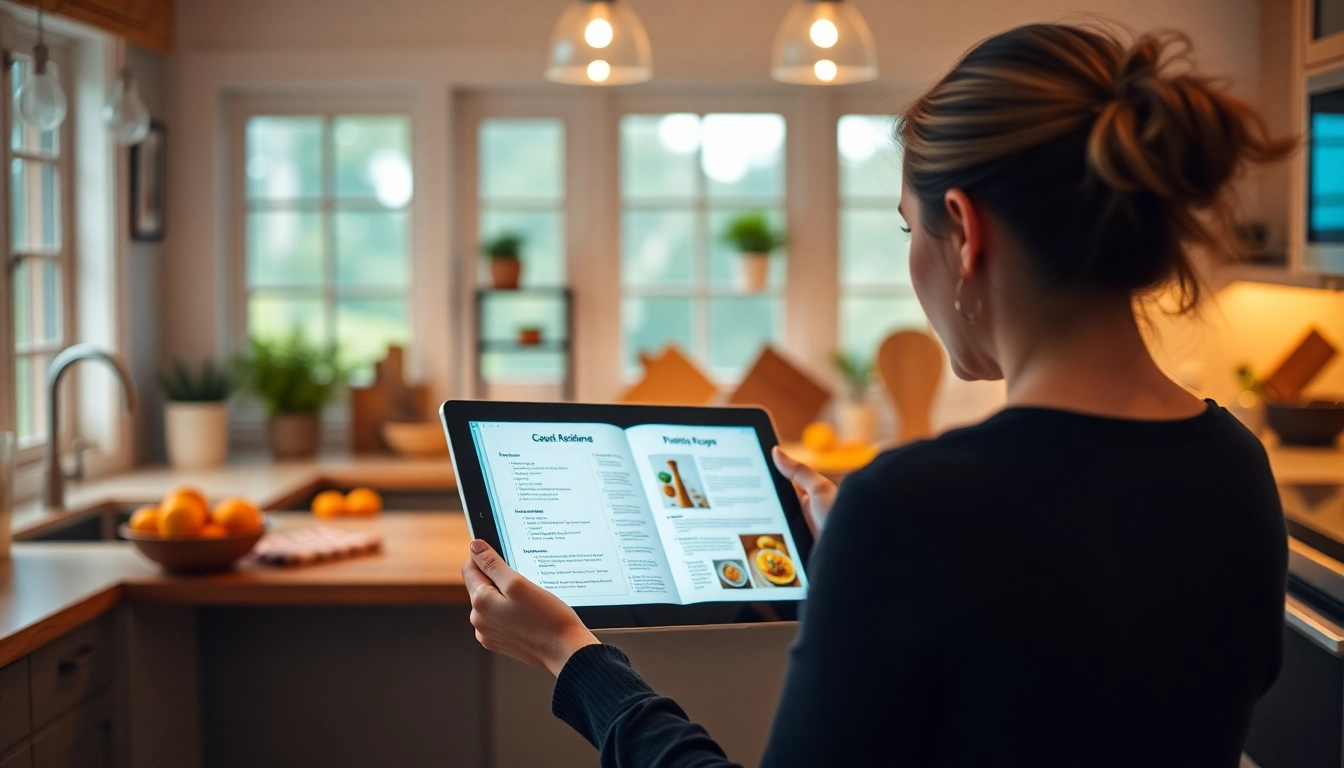
Understanding the Basics of Building a Custom Cookbook
Why Create Your Own Cookbook?
Creating your own cookbook is more than just compiling recipes; it’s about preserving culinary heritage, expressing personal taste, and passing down family traditions. Whether you’re an aspiring chef, a home cook, or someone looking to organize cherished recipes, building a custom cookbook offers a unique way to celebrate your culinary journey. In today’s digital age, personal cookbooks have evolved from simple handwritten notes to professionally designed books, blending personal storytelling with aesthetic appeal. Crafting your own cookbook allows you to curate recipes that resonate with your lifestyle, dietary preferences, and cultural background—transforming a collection of recipes into a meaningful legacy.
Moreover, a personalized cookbook can serve as a thoughtful gift for loved ones, a marketing tool for aspiring food entrepreneurs, or a profitable product in the culinary market. For those interested in exploring how to build my own cookbook, understanding the fundamental steps involved is crucial to creating a compelling and functional culinary anthology. This guide aims to provide a comprehensive roadmap for turning your culinary ideas into a polished, shareable masterpiece.
Key Features to Include in Your Personal Cookbook
An effective personal cookbook balances aesthetic appeal with functional usability. To achieve this, consider incorporating the following features:
- Clear and Organized Layouts: Categorize recipes by meal type, main ingredients, cuisine, or occasions to facilitate easy navigation.
- High-Quality Photos: Visuals help enhance the appeal and give proper context to each recipe. Include step-by-step images where appropriate.
- Descriptive Recipe Instructions: Precise, easy-to-follow directions ensure successful replication for readers.
- Personal Stories and Anecdotes: Sharing memories or cultural insights adds depth and personal connection.
- Special Dietary Notes: Highlight recipes suitable for specific diets such as vegetarian, gluten-free, or low-carb.
- Ingredient Substitutions and Tips: Offer alternatives to accommodate ingredient availability and preferences.
- Index and Appendices: Include an index for quick reference, as well as sections on tools, techniques, and kitchen tips.
Integrating these features enhances usability, personal touch, and overall value, making your cookbook a treasured resource for family, friends, or customers.
Common Methods and Tools for DIY Cookbook Building
Building a personal cookbook can be approached through various methods, ranging from traditional paper-based projects to advanced digital platforms. Here are some options to consider:
1. Handwriting and Physical Assembly
Many start by handwritten notebooks or scrapbooks, which add a personal touch. This method offers tactile satisfaction and emotional value, especially when integrating handwritten recipes, sketches, and family mementos. However, it can pose challenges in duplication, editing, and sharing.
2. Digital Word Processors
Using programs like Microsoft Word or Google Docs allows for easy editing and formatting. You can compile recipes, include images, and arrange layouts. Once finalized, digital files can be printed or converted into PDFs for sharing.
3. Specialized Cookbook Software and Online Platforms
There are numerous dedicated tools designed specifically to facilitate cookbook creation, such as CreateMyCookbook or Heritage Cookbook. These platforms provide customizable templates, easy drag-and-drop interfaces, and professional design options, simplifying the process for users without design experience.
4. Design Software (Adobe InDesign, Canva)
For those with design skills, software like Adobe InDesign or Canva offers extensive customization for layout, fonts, and graphics. Canva, in particular, offers hundreds of templates tailored to cookbooks, making it accessible for beginners.
5. Print-On-Demand and Self-Publishing
Once your project is complete, you can utilize services such as Lulu, Shutterfly, or Mixbook to print physical copies. These platforms often include options for hardcover or spiral-bound books, enabling you to produce professional-quality products suitable for gifting or selling.
Choosing the right method depends on your skill level, budget, desired outcome, and how actively you wish to update or customize your cookbook over time.
Collecting and Organizing Your Recipes Effectively
Gathering and Digitizing Family Recipes
The foundation of a meaningful cookbook often lies in treasured family recipes. Start by collecting handwritten notes, printed recipes, or even old photographs of dishes. Digitizing these recipes—by scanning handwritten cards or typing them into a document—ensures longevity and ease of editing. Tools like mobile scanning apps or OCR (Optical Character Recognition) technology can convert handwritten notes into digital text, streamlining organization.
Involving family members in this process not only enriches the collection but also fosters a sense of shared history and tradition. Remember to verify ingredients and instructions to ensure clarity and accuracy for future readers.
Organizing Recipes by Categories and Themes
Organizing recipes logically enhances the user experience of your cookbook. Common categories include:
- Appetizers & Snacks
- Main Courses & Entrées
- Soups & Stews
- Desserts & Snacks
- Beverages
- Special Diets or Occasion-Specific Sections
Within each, further subcategories such as vegetarian, quick meals, or seasonal dishes can be added. Thematic collections, like holiday recipes or family favorites, can also add personal charm.
Tips for Ensuring Consistent Formatting and Quality
Consistency in layout, font styles, measurement units, and photo presentation is vital for a professional-looking cookbook. Use templates or style guides to standardize headings, ingredient lists, and step instructions. For instance:
- Use a uniform font size and style throughout the book.
- Maintain consistent measurement units (metric or imperial).
- Adopt a standard structure for each recipe (e.g., Title, Prep Time, Ingredients, Instructions, Notes).
- Quality control—review each recipe for clarity, spelling, and accuracy.
Engaging beta readers or family members for feedback can help identify confusing sections or inconsistencies before finalizing your project.
Designing Your Cookbook for Visual Appeal
Selecting the Right Templates and Styles
Design is central to making your cookbook attractive and engaging. Begin by choosing a template aligned with your personal style or theme. Minimalist, rustic, elegant, or modern—each aesthetic influences how your recipes are perceived. Established platforms like Canva or CreateCookbooks offer diverse styles suited for different needs.
Consider your target audience: a family cookbook might favor warm, homey designs, while a professional culinary guide might lean towards sleek, sophisticated layouts.
Customizing Layouts, Fonts, and Photos
Personalization involves selecting fonts that are easy to read and complement your theme. For instance, serif fonts often evoke tradition, while sans-serif fonts suggest modernity. Incorporate high-resolution photos, either professional or candid, to illustrate recipes vividly. Use consistent photo styles—lighting, framing, filters—to achieve harmony across the book.
Integrate decorative elements cautiously, ensuring they enhance rather than clutter your design. Use borders, icons, or subtle backgrounds to add elegance without overwhelming content.
Adding Personal Touches and Stories
Incorporate personal anecdotes, family histories, or cultural insights to make your cookbook more than just a collection of recipes. These stories create emotional connection and encourage repeat readership. For example, share the origin of a signature dish or a memorable family gathering centered around certain recipes.
Handwritten notes, signature pages, or favorite quotes can also add authenticity and sentimental value.
Publishing and Sharing Your Created Cookbook
Choosing Between Print and Digital Formats
Deciding how to publish your cookbook depends on your goals. Digital formats, such as PDFs or e-books, are easy to distribute via email, websites, or social media. They are cost-effective and accessible across devices. On the other hand, physical books offer tangible appeal, collectible quality, and memorable gifting opportunities.
Hybrid approaches—offering both editions—maximize reach and usability. You can also consider printing limited editions for family or special occasions and digital copies for broader distribution.
Best Platforms for Publishing and Distribution
Several online platforms simplify publishing. For print-on-demand, services like Lulu, Shutterfly, and Mixbook enable you to produce professional copies without large upfront costs. These platforms often offer customizable templates, binding options, and global shipping. For digital sharing, options include hosting on your personal website, using PDF distributions, or leveraging platforms like Amazon Kindle Direct Publishing for broader market access.
Social media channels and personal blogs also serve as effective avenues for promoting your cookbook, especially when accompanied by engaging images and stories.
Promoting Your Book to Reach Family and Friends
Promotion strategies include hosting launch parties, sharing previews on social media, and offering personalized copies as gifts. Creating a website or landing page can help showcase your book’s value, share testimonials, and enable direct orders. Engaging your community through cooking classes, webinars, or cooking demos can further elevate visibility and foster deeper connections.
Maximizing the Impact and Profitability of Your Cookbook
Monetizing Your Personal Recipes
If you aim to turn your cookbook into a revenue stream, focus on quality content, branding, and effective marketing. Unique recipes, authentic storytelling, and beautiful design increase perceived value. Consider offering exclusive recipes, limited editions, or personalized cooking sessions as additional products.
Strategies for Selling Your Cookbook Online
Leverage e-commerce platforms such as Shopify, Etsy, or your own website to reach a wider audience. Use targeted digital marketing—SEO, social media advertising, email campaigns—to attract potential buyers. Incorporate customer reviews and testimonials to build trust. Offering sample recipes or downloadable previews can entice potential customers to purchase the full version.
Legal Considerations and Copyright Protections
Protecting your intellectual property rights is essential. When creating a personal cookbook, your works are automatically copyrighted. However, for added protection and to prevent unauthorized commercial use, consider registering your work with the U.S. Copyright Office.
Furthermore, be aware of copyright laws regarding images, quotes, or recipes licensed from third parties. Always attribute sources appropriately or create original content to avoid legal issues.






